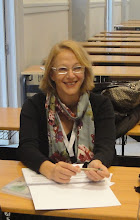History of Sierra Leone
Sierra Leone officially the Republic of Sierra Leone, is a country in West Africa. It is bordered by Guinea to the north and east, Liberia to the southeast, and the Atlantic Ocean to the west and southwest. Sierra Leone covers a total area of 71,740 km2.

Sierra Leone’s map

Sierra Leone in Africa
Archaeological finds show that Sierra Leone has been inhabited continuously for at least 2,500 years, populated by successive movements from other parts of Africa. But the history of the country cannot be understood without the European influence.
The first Portuguese navigators reached the region in 1460 and name it Serra Lyoa (lion mountains) because of the mountains located there. By 1495 the Portuguese were joined to the Dutch and French; all of them using Sierra Leone as a trading point for slaves. In 1562, the colony had an important trade in human beings, some examples are Sir John Hawkins who ordered to catch 300 people for slavery (they were for the new colonies of America) or the number of slaves that arrived during this decade to the British ports of London and Liverpool (more than 800 people). In such a way, Sierra Leone’s was one of the slavery centres from the Atlantic Slave Trade.

British traders of the Royal African company established Forts along the coast for more trading in 1672 (making the country one of the first West African British colonies), but the British did not have monopoly on the area. Rival European nations attacked the Forts in search of land possession.
In 1787, 400 persons (including 330 blacks and 70 white prostitutes) arrived at the Sierra Leone Peninsula and established the Province of Freedom, near of the nowadays Freetown. The settlement did not function well, and most of the inhabitants died of disease in the first year. A renewed attempt at settlement was made in 1792, when about 1100 freed slaves from Nova Scotia (Canada) under the leadership of the abolitionist Thomas Clarkson arrived and founded Freetown (Sierra Leone’s capital). Another group of slaves rebelled in Jamaica were added in 1800.
The future of the settlement became secure when the British government, with the abolition of the slave trade in 1807, took responsibility for Sierra Leone in 1808 as a base against slaving ships, the country officially became a British Colony with the land’s possession of Sierra Leone Company (formerly known as St George’s Bay Company) transferred to the crown. The colony was dedicated to demonstrating the principles of Christianity, civilization and commerce.
The British were reluctant to assume more responsibility because of the increasing size of the colony, but in 1896 it was proclaimed a British Protectorate, mainly to avoid French ambitions in the region. Under the British power, little economic development was undertaken in the protectorate until the 1950s and after the World War II, Africans were given more political responsibility, and educational opportunities were enlarged. In the economic sphere, mines of diamonds, iron and gold increased greatly.

Diamonds in Sierra Leone
The Creoles of the colony (most of the descendants of the freedmen), who had been largely excluded from higher government in favor of the British, had a larger voice in the affairs of Sierra Leone. A constitution adopted in 1951 gave additional power to Africans.
The country attained republican status on the 19th April 1971. However, during the 1990's there were successive civil disturbances culminating into a cruel and terrible rebel war that makes necessary the intervention of the International Community led by the United Nations Mission in Sierra Leone (UNAMSIL). Various international organizations helped provide an environment for free and fair presidential and parliamentary elections of 2002.
“Sierra Leone is among the top 10 diamond producing nations in the world, and mineral exports remain the main currency earner. The country is also among the largest producers of titanium and one of the biggest producers of gold. Sierra Leone is also the home to the third largest natural harbour in the world; where ships from all over the world go to transport products. However, in spite of this natural wealth, over 70% of its people live in a serious poverty”.
Sources:
http://www.history.ac.uk/ihr/Focus/Slavery/articles/sherwood.html
http://www.historyworld.net/wrldhis/PlainTextHistories.asp?historyid=ad45
http://en.wikipedia.org/wiki/Sierra_Leone
http://en.wikipedia.org/wiki/Atlantic_slave_trade
http://www.worldrover.com/history/sierra_leone_history.html
http://www.visitsierraleone.org/Background-Information/history/Sierra-Leone-Modern-History.html
http://www.infoplease.com/ce6/world/A0861084.html
Labels: British Colonies


0 Comments:
Post a Comment
Subscribe to Post Comments [Atom]
<< Home